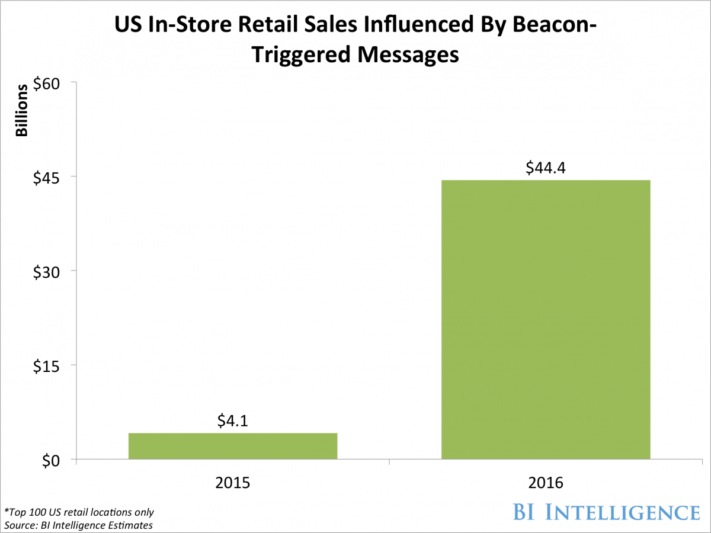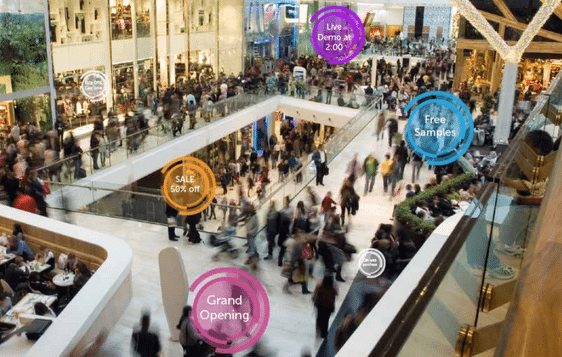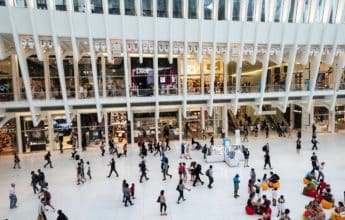With practices like showrooming negatively impacting physical sales, retailers have been thinking beyond brick-and-mortar to offer more powerful, multi-channel experiences to engage customers and drive business. Mobile has been a large part of the strategy as m-commerce solutions have proven to be both viable and profitable. Now, retailers can add another weapon to their arsenals: beacons.
According to recent research from Business Insider, beacons are expected to influence $4 billion worth of US retail sales this year at top retailers alone, and this number is projected to climb to a staggering $44.4 billion by 2016.

The potential applications for beacon technology are massive. This post will give a breakdown of how retailers can add beacons to their mobile strategies to significantly improve sales, customer experiences, business intelligence, and retail operations.
The Pillars of a Beacon-Powered Retail Strategy
Beacons provide unparalleled ability for retailers to connect with customers in new ways that not only improve and personalize the customer experience, but also improve marketing capabilities, gain valuable customer intelligence, and accelerate sales.
Marketing & Customer Experience
Couponing
Mobile couponing is already a huge market. RetailMeNot claims its service alone influenced $3.5 billion in retail sales in 2013. Beacon-triggered coupons will only accelerate the mobile couponing industry to new heights, with specific coupons being served to shoppers at particular locations or with particular purchasing patterns.
Proximity Marketing
Also known as hyperlocal marketing, proximity marketing offers an unprecedented ability for retailers to market to customers based on location. The applications in retail are exceptional. Beacons can communicate with users’ devices to accomplish a number of different goals.
Push notifications can be sent to shoppers who are close to stores to entice them to come in by offering special promotions. Market statistics show that this kind of messaging is effective – 53% of consumers are willing to share their location to receive more relevant ads, and 57% of consumers are more likely to engage with location-based advertising.
There is also the ability to go even more granular, serving advertisements and promotions that are based on where a shopper is located within your store.
Contextual Targeting
Similar to proximity marketing, contextual targeting leverages the user data from a retailer’s mobile app to offer hyper-targeted messaging based on particular context. This could include a combination of user location, profile, shopping/purchasing history, in-store activity and more. With this information, app users are provided specific deals, discounts, recommendations, rewards and more. For example, sending a targeted message to customers based on how long they have spent in a section of your store.
Loyalty & Rewards
Loyalty programs are a central part of proximity marketing and contextual targeting. Beacons allow retailers to offer specific promotions, discounts, recommendations and messaging based on location and purchase history. There is also the possibility to offer certain perks prompted by location-based actions that app users take, such as entering a particular section of a store.
Bridging Online/Offline Experiences
Given the popularity of retail on mobile and the increase of “webrooming”, it’s increasingly important that retailers bridge the gap between online and offline customer experiences. Beacons can help make this a reality by using app/online data to offer relevant in-store experiences for shoppers.
Analytics & Intelligence
Footfall
Beacons can help take away the guess work with the amount of traffic coming in and out of particular retail locations. Even when beacons don’t trigger particular messages, they can be used to passively measure traffic by communicating with devices that are in range.
In-Store Activity
Not only can you track footfall, but you can also discern patterns based on what customers are doing when they’re in your store. This includes metrics such as the busiest sections of your store, busiest hours based on particular timeframes, how long customers average in certain locations, and more. This information can be used to optimize merchandising, guide capacity planning, and help more accurately allocate staff and resources.
Recency & Frequency of Visits
Beacons can help retailers gather information on customer recency and frequency of visits, which in turn can provide insights to offer more timely and relevant marketing communications, push messaging, promotional offers, etc.
Beacons are no longer an experimental technology; large brands like Macy’s have already launched successful pilot projects and are implementing beacon solutions on a wide scale. Other major retailers are following suit, with 37% of tier 1 retailers projected to adopt beacons by the end of the year, expected to rise to almost 60% by the end of 2016. Retailers have a lot to gain from using beacons, not least of which is a better bottom line.





